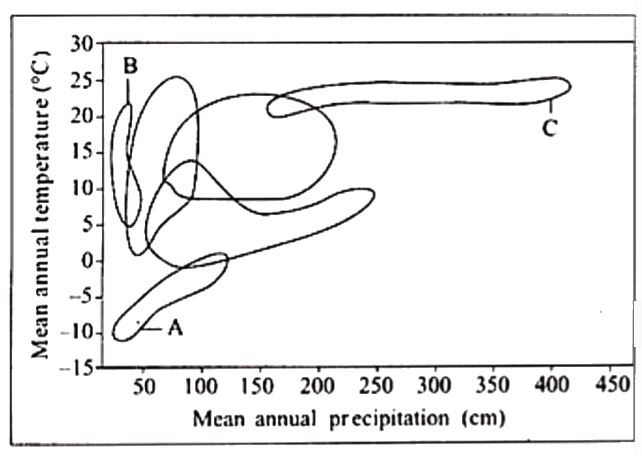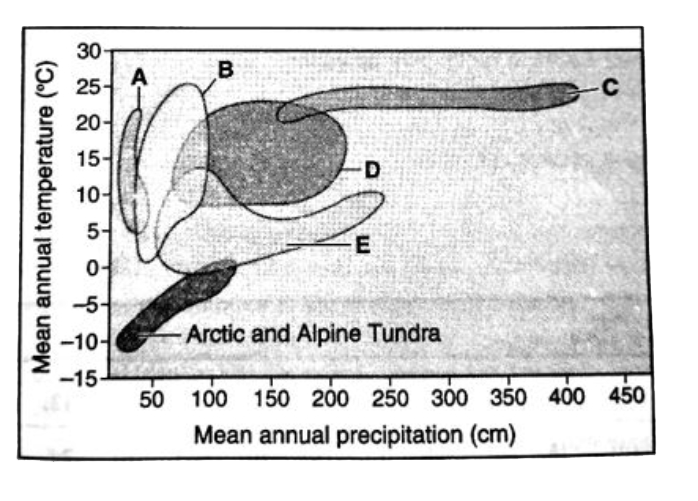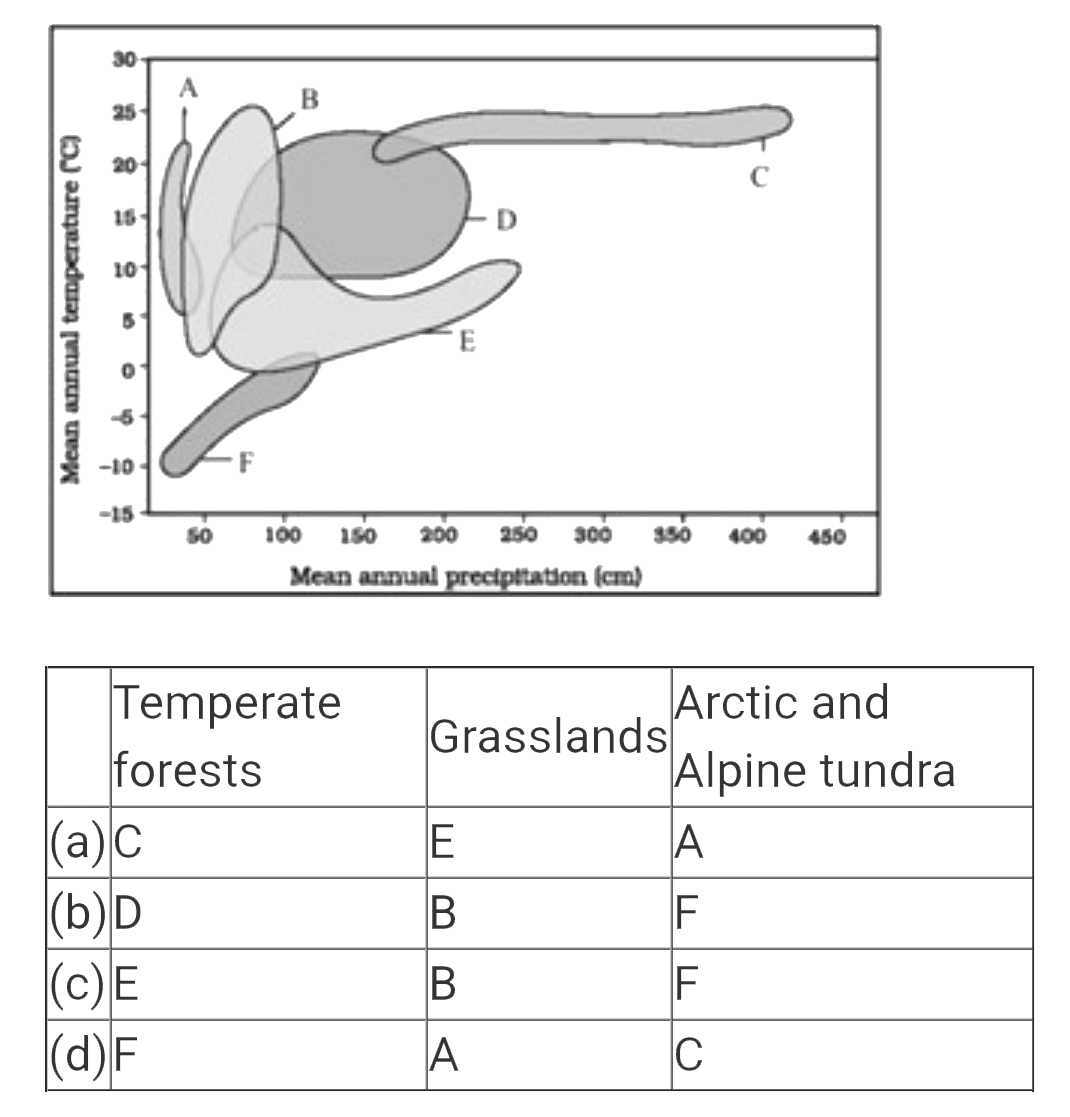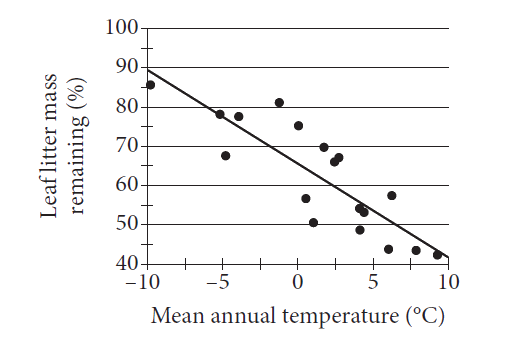Formation of tropical forests needs mean annual temperature and mean annual precipitation as
18−25∘C and 150−400cm
5−15∘C and 50−100cm
30−50∘C and 100−150cm
5−15∘C and 100−200cm
The correct Answer is:A
To answer the question regarding the formation of tropical forests and the required mean annual temperature and mean annual precipitation, we can follow these steps:
1. Understanding Tropical Forests:
- Tropical forests are known for their high biodiversity, which includes a wide variety of plants and animals. This biodiversity is supported by specific climatic conditions.
2. Temperature Requirements:
- The mean annual temperature in tropical forests is typically warm. It is neither too low nor excessively high. The ideal range for the mean annual temperature is between 18°C to 25°C. This temperature range allows for a stable environment conducive to the growth of diverse flora and fauna.
3. Precipitation Requirements:
- Tropical forests also require a significant amount of rainfall to sustain their ecosystems. The mean annual precipitation should be fairly high, ranging from 150 cm to 400 cm. This high level of precipitation ensures that there is sufficient water available throughout the year, promoting high productivity among plant life.
4. Conclusion:
- Therefore, for the formation of tropical forests, the ideal mean annual temperature is 18°C to 25°C and the mean annual precipitation is 150 cm to 400 cm. These conditions are essential for supporting the rich biodiversity found in tropical forests.
Final Answer:
The formation of tropical forests needs a mean annual temperature of 18°C to 25°C and a mean annual precipitation of 150 cm to 400 cm.
---
- Tropical forests are known for their high biodiversity, which includes a wide variety of plants and animals. This biodiversity is supported by specific climatic conditions.
- The mean annual temperature in tropical forests is typically warm. It is neither too low nor excessively high. The ideal range for the mean annual temperature is between 18°C to 25°C. This temperature range allows for a stable environment conducive to the growth of diverse flora and fauna.
- Tropical forests also require a significant amount of rainfall to sustain their ecosystems. The mean annual precipitation should be fairly high, ranging from 150 cm to 400 cm. This high level of precipitation ensures that there is sufficient water available throughout the year, promoting high productivity among plant life.
- Therefore, for the formation of tropical forests, the ideal mean annual temperature is 18°C to 25°C and the mean annual precipitation is 150 cm to 400 cm. These conditions are essential for supporting the rich biodiversity found in tropical forests.
The formation of tropical forests needs a mean annual temperature of 18°C to 25°C and a mean annual precipitation of 150 cm to 400 cm.
Topper's Solved these Questions
- ORGANISMS AND POPULATIONBOOK - NCERT FINGERTPS ENGLISHCHAPTER - ORGANISMS AND POPULATIONEXERCISE - Assertion & Reason
15 Videos
- ORGANISMS AND POPULATIONBOOK - NCERT FINGERTPS ENGLISHCHAPTER - ORGANISMS AND POPULATIONEXERCISE - Organisms And Population
175 Videos
- ORGANISMS AND POPULATIONBOOK - NCERT FINGERTPS ENGLISHCHAPTER - ORGANISMS AND POPULATIONEXERCISE - HOTS
5 Videos
- MOLECULAR BASIS OF INHERITANCEBOOK - NCERT FINGERTPS ENGLISHCHAPTER - MOLECULAR BASIS OF INHERITANCEEXERCISE - Molecular Basis Of Inheritance
151 Videos
- PRACTICE PAPERSBOOK - NCERT FINGERTPS ENGLISHCHAPTER - PRACTICE PAPERSEXERCISE - Practice paper
150 Videos
Similar Questions
Knowledge Check
Seasonal and annual precipitation affects the of water.
AFlowBAvailabilityCpH valueDQuality
The graph given below is showing biome distribution with respect to annual temperature and precipitation. Identify A, B and C, respectively.

View SolutionBiome distribution with respect to annual temperature and precipitation is given below. Identify grassland and coniferous forest by selecting the CORRECT option .

View SolutionIn the given diagram , Biome distribution is shown with respect to annual temperatrue and precipitation. Select the correct option.

View SolutionThe biome in which the mean annual temperature is approximately between 20∘Cand25∘C and the mean annual precipitation is approximately between 150 cm to 450 cm is
View SolutionAssertion:- Distinct seasons and annual variation in precipitation leads to formation of major biomes.
Reason:- Distinct seasons and annual variation in precipitation leads to development of different climatic conditions which favours growth and development differentially.
View SolutionThe figure below shows the relationship between the percent of leaf litter mass remaining after decomposing for 3 years and the mean annual temperature, in degrees Celsius (.∘C), in 18 forests in Canada. A line of best fit is also shown.

A particular forest in Canada, whose data is not included in the figure, had a mean annual temperature of −2∘C. Based on the line of best fit, which of the following is closest to the predicted percent of leaf litter mass remaining in this particular forest after decomposing for 3 years?
View Solution"Tropic hormones"Means
View Solution
